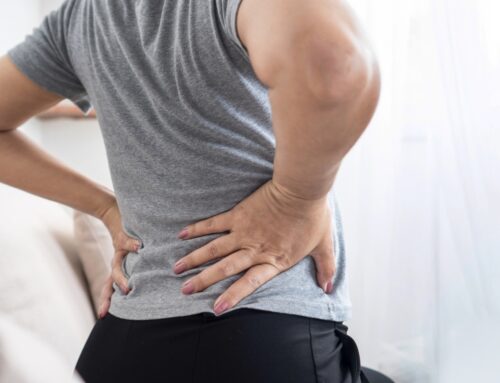Whether you’re heading to school, commuting to work, or running errands, backpacks offer an easy way to lug all that stuff you need around. But when they’re overloaded or worn incorrectly, they can quietly take a toll on your body. What starts as mild discomfort can progress into chronic back pain, postural issues, and even spinal misalignments.
This kind of strain isn’t limited to kids or students. Adults of all ages are experiencing backpack-related pain more frequently, especially with heavier loads and longer periods of wear. Yet, these problems are preventable, and your local Spring Hill and Colombia chiropractors are here to help. Let’s take a closer look.
Why Do I Feel Pain After Carrying My Backpack?
The mechanics of carrying a backpack place unique demands on your musculoskeletal system that your body wasn’t designed to handle for extended periods. When you add weight to your back, your center of gravity shifts, forcing your body to make compensations that can lead to pain and dysfunction.
Your spine naturally has curves that help distribute weight and absorb shock during movement. However, a heavy backpack pulls these curves out of alignment, particularly in your lower back and neck. To counterbalance the backward pull of the pack, you unconsciously lean forward, straining the muscles in your back, neck, and shoulders. This forward lean compresses the discs between your vertebrae and places excessive stress on the supporting muscles and ligaments.
The shoulder straps of your backpack also play a significant role in the development of pain. When straps dig into your shoulders, they compress nerves and blood vessels, potentially causing numbness, tingling, and reduced circulation to your arms. The trapezius muscles, which run from your neck to your shoulders, bear the brunt of this pressure and often become tight and painful as a result.
Additionally, uneven weight distribution in your backpack creates asymmetrical forces on your spine. If your pack is heavier on one side or if you habitually carry it on one shoulder, your spine must twist and bend to compensate. This repetitive asymmetrical loading can lead to muscle imbalances, joint dysfunction, and chronic pain patterns that persist even when you’re not carrying your pack.
How to Prevent Backpack Pain
Prevention starts with understanding that how you pack and carry your backpack matters just as much as its weight. By implementing smart strategies and making conscious choices about your carrying habits, you can significantly reduce your risk of developing backpack-related pain.
Choose the Right Backpack
Not all backpacks are created equal when it comes to protecting your spine. Look for a pack with wide, padded shoulder straps that distribute weight across a larger surface area. The back panel should also be padded and contoured to fit the natural curve of your spine. A waist belt, though often overlooked, can transfer up to 50% of the pack’s weight from your shoulders to your hips, significantly reducing strain on your upper body.
Size matters too; your backpack shouldn’t extend above your shoulders or below your waist when properly positioned. Multiple compartments help with weight distribution, allowing you to organize items strategically. Avoid messenger bags or single-strap bags for heavy loads, as they create uneven stress on your spine.
Pack Smart and Light
The general guideline suggests carrying no more than 10-20% of your body weight in your backpack. For a 150-pound person, this means keeping your pack under 30 pounds at the absolute maximum. Evaluate what you’re carrying daily and eliminate unnecessary items. Digital alternatives for textbooks, using lockers when available, and planning ahead can all help reduce your load.
When packing, place the heaviest items closest to your back and centered between your shoulder blades. This positioning keeps the weight close to your body’s center of gravity, reducing the forward pull on your spine. Use all available compartments to prevent items from shifting during movement, which can throw off your balance and increase strain.
Adjust and Wear Properly
Both shoulder straps should be used every time – wearing your pack on one shoulder doubles the stress on that side of your body. Adjust the straps so the pack sits close to your back without gaps. The bottom of the pack should rest in the curve of your lower back, not hang down by your buttocks.
Tighten the straps enough to prevent excessive movement but not so tight that they restrict arm circulation. If your backpack has a waist belt and chest strap, use them to further stabilize the load and reduce shoulder strain. Take time to readjust throughout the day, as straps can loosen with movement.
Take Regular Breaks
Your spine needs periodic relief from carrying weight, no matter how well-distributed that weight might be. During long days, find opportunities to remove your backpack completely, even if just for a few minutes. Set your pack down during lunch, while waiting for transportation, or between classes. These brief respites allow your muscles to relax and your spine to decompress.
When you do remove your pack, take a moment to roll your shoulders backward and stretch your neck gently from side to side. These simple movements help counteract the forward posture encouraged by backpack wearing and promote healthy blood flow to tired muscles.
Visit Your Chiropractor Regularly
Chiropractic care provides both preventive and corrective benefits for backpack-related pain. Regular spinal adjustments help maintain proper alignment, ensuring your spine can better handle the demands of daily carrying. Your chiropractor can identify and correct misalignments before they develop into painful conditions, keeping your spine functioning optimally.
Curious to learn more? Book your appointment with the Premier Chiropractic team today!






